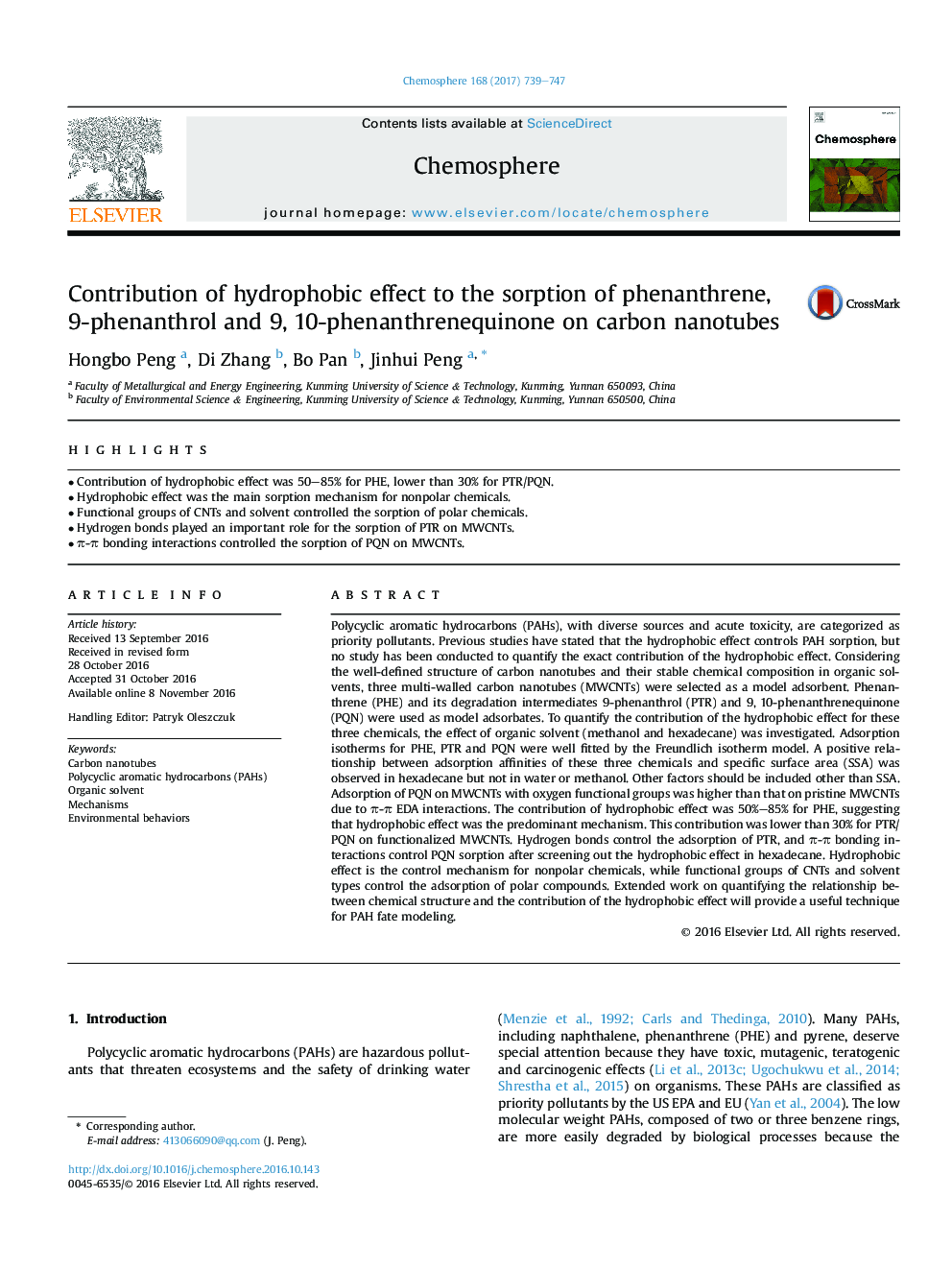| کد مقاله | کد نشریه | سال انتشار | مقاله انگلیسی | نسخه تمام متن |
|---|---|---|---|---|
| 5746613 | 1618803 | 2017 | 9 صفحه PDF | دانلود رایگان |
- Contribution of hydrophobic effect was 50-85% for PHE, lower than 30% for PTR/PQN.
- Hydrophobic effect was the main sorption mechanism for nonpolar chemicals.
- Functional groups of CNTs and solvent controlled the sorption of polar chemicals.
- Hydrogen bonds played an important role for the sorption of PTR on MWCNTs.
- Ï-Ï bonding interactions controlled the sorption of PQN on MWCNTs.
Polycyclic aromatic hydrocarbons (PAHs), with diverse sources and acute toxicity, are categorized as priority pollutants. Previous studies have stated that the hydrophobic effect controls PAH sorption, but no study has been conducted to quantify the exact contribution of the hydrophobic effect. Considering the well-defined structure of carbon nanotubes and their stable chemical composition in organic solvents, three multi-walled carbon nanotubes (MWCNTs) were selected as a model adsorbent. Phenanthrene (PHE) and its degradation intermediates 9-phenanthrol (PTR) and 9, 10-phenanthrenequinone (PQN) were used as model adsorbates. To quantify the contribution of the hydrophobic effect for these three chemicals, the effect of organic solvent (methanol and hexadecane) was investigated. Adsorption isotherms for PHE, PTR and PQN were well fitted by the Freundlich isotherm model. A positive relationship between adsorption affinities of these three chemicals and specific surface area (SSA) was observed in hexadecane but not in water or methanol. Other factors should be included other than SSA. Adsorption of PQN on MWCNTs with oxygen functional groups was higher than that on pristine MWCNTs due to Ï-Ï EDA interactions. The contribution of hydrophobic effect was 50%-85% for PHE, suggesting that hydrophobic effect was the predominant mechanism. This contribution was lower than 30% for PTR/PQN on functionalized MWCNTs. Hydrogen bonds control the adsorption of PTR, and Ï-Ï bonding interactions control PQN sorption after screening out the hydrophobic effect in hexadecane. Hydrophobic effect is the control mechanism for nonpolar chemicals, while functional groups of CNTs and solvent types control the adsorption of polar compounds. Extended work on quantifying the relationship between chemical structure and the contribution of the hydrophobic effect will provide a useful technique for PAH fate modeling.
Journal: Chemosphere - Volume 168, February 2017, Pages 739-747
